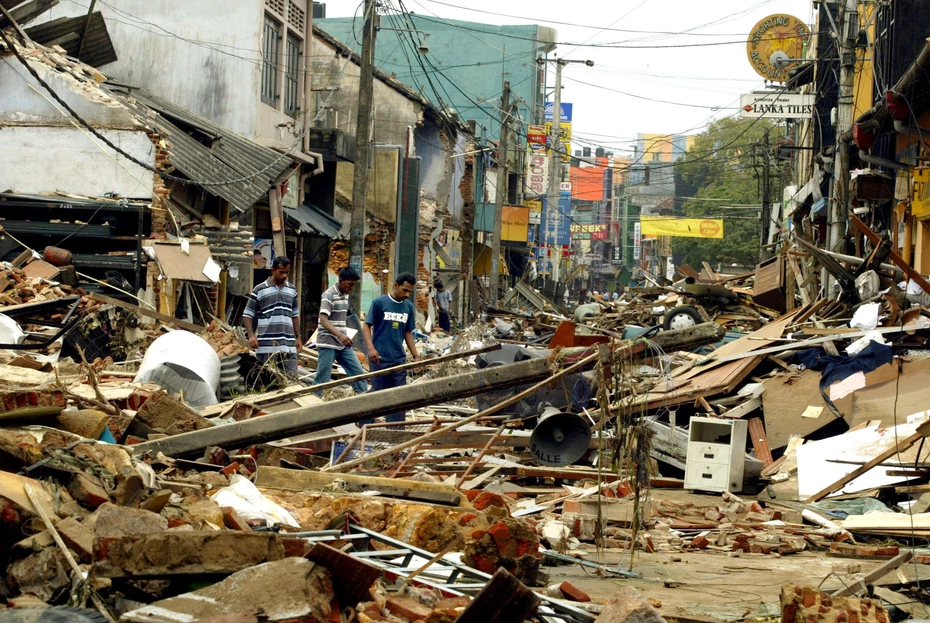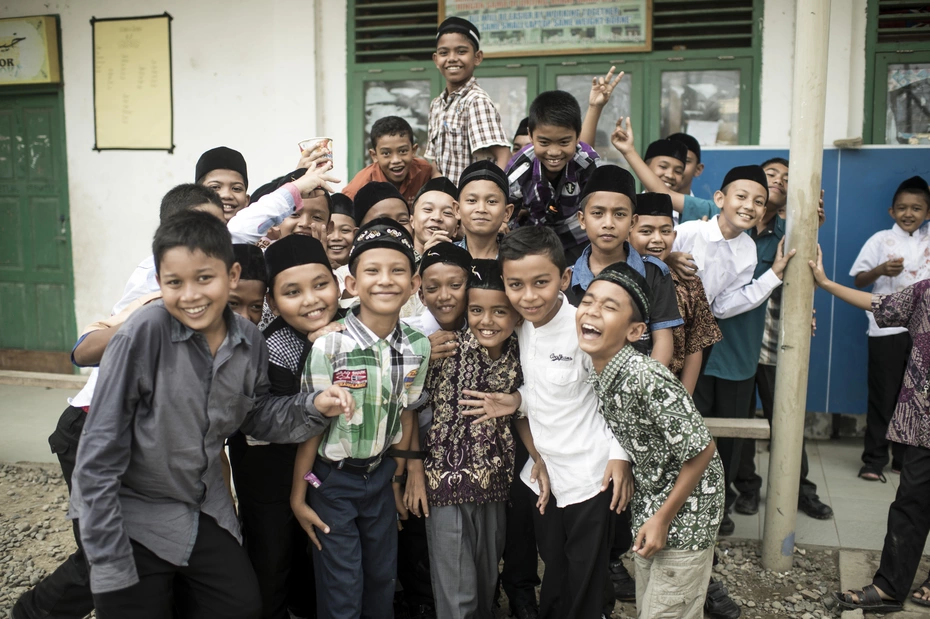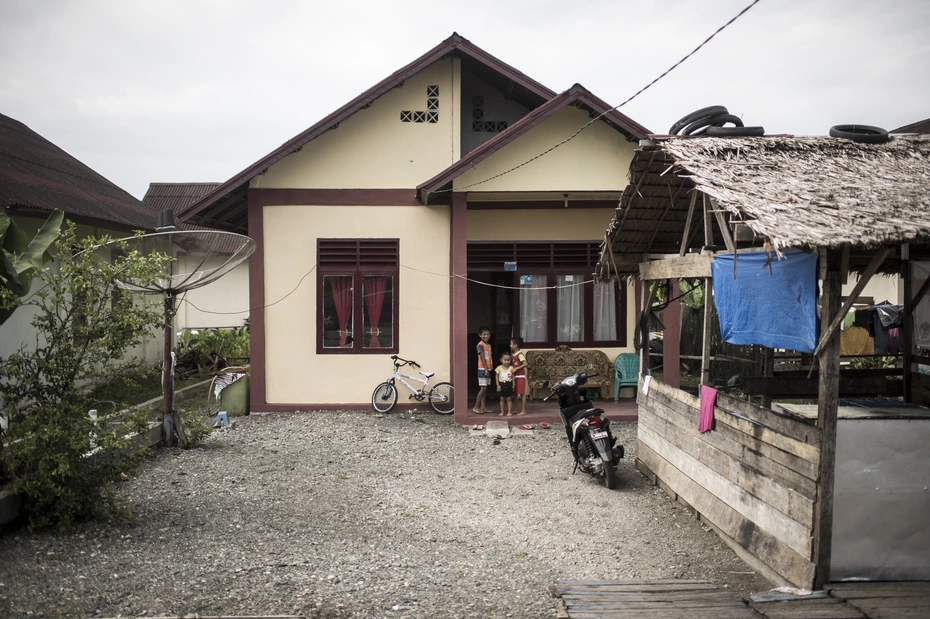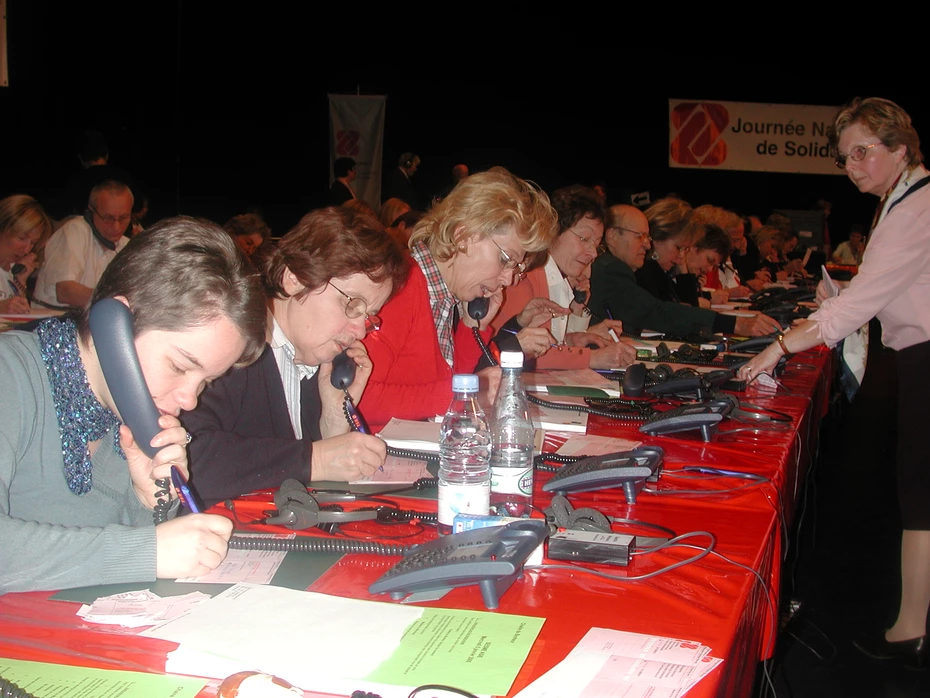Tsunami in Southeast Asia
The call for donations for the victims of the 2004 tsunami raised CHF 227.7 million, making it our biggest fundraising campaign ever. Find out how your donations have been used.

A record number of donations
On 26th December 2004, one of the most devastating natural disasters of recent times struck Southeast Asia. An undersea earthquake sparked two storm tides that caused damage, some of it devastating, in 13 countries, claiming around 215,000 lives.
Some 15 million people were affected, and 1.7 million lost the roof over their heads.
The terrible pictures, the extent of the disaster, the many countries affected and the sheer numbers of people who died or needed emergency relief – all this aroused unprecedented concern and solidarity with the victims of the disaster.
How your donation helped
Here is an overview of the results:
More than 5 million people have received emergency aid, long-term support, and opportunities for the future. Over 23,000 houses have been built or repaired, providing stability and a renewed sense of security. Schools and hospitals have been rebuilt, offering hope for education and healthcare. Economic aid has enabled small businesses, such as coffee roasters and brickworks, to recover.
- More than 5 million people have received emergency aid, long-term support, and new opportunities.
- Twenty-three thousand homes have been built or repaired to provide stability and a new sense of security.
- Schools and hospitals have been rebuilt, offering people hope for the future of education and healthcare.
- Economic aid has enabled small businesses, such as coffee roasters and brickworks, to recover.
In total, 183 projects have been implemented by 15 Swiss partner NGOs and ten other humanitarian organisations in six countries.

Relief for the victims of the undersea quake
Following the emergency relief efforts, our partner organizations immediately began planning long-term reconstruction in the hardest hit countries: Indonesia, Sri Lanka, India, Thailand and Somalia. We funded a total of 183 projects by 15 partner relief organizations and ten further humanitarian organisations in six countries. So our tsunami aid efforts are now at an end.

Aid in figures
We used 23 percent of the donations for emergency relief, providing the victims with essential items for survival.
The majority of the donations, 67 percent, was used for reconstruction and to improve livelihoods. And thanks to the projects, the local people are now better prepared to face any future disaster.
In addition, thanks to the projects, the population is now better prepared for future disasters.
Taking stock 10 years after the tsunami
We carried out a large-scale independent evaluation, which showed that 90 percent of the people who received aid can once again meet their own basic needs. However, a little more than 10 percent of those surveyed still face difficulties.
The construction of 23,000 houses meant that many families had to worry less about the future.
Any money that they might have saved could be used for things such as school fees or building up a business. Furthermore, their new houses gave them a better social status.
However, the evaluation showed that for those whose lives were already tough before the tsumani, it is still hard to find a way out of poverty despite the tsuami aid.


